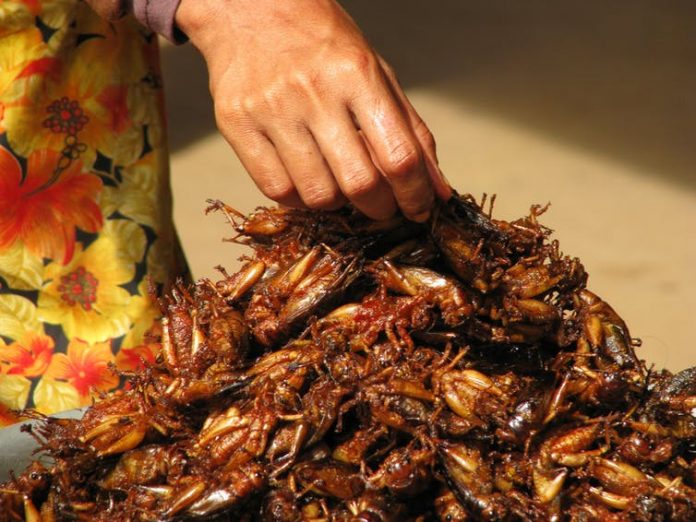Food researchers in Australia have found a new way to deliver protein to hungry people: maggot sausage.
Overpopulation is slowly but surely becoming a reality for our planet, putting further strain on the environment and its resources. One of the key problems with our resource management is the way we obtain the protein in our diet. A huge chunk of the world’s protein comes from livestock – whether it’s beef, pork, lamb, goat, poultry, or fish – but it’s a terribly inefficient system. It creates tons of carbon emissions, it takes up heaps of land, and it’s not especially good for our health either.
If we’re going to sustainably feed the world in decades to come, it looks like the protein of the future will be insects. So, scientists from the University of Queensland are looking into the use of creepy crawlies as an alternative source of protein, while also making it appetizing enough for fussy consumers.
“An overpopulated world is going to struggle to find enough protein unless people are willing to open their minds, and stomachs, to a much broader notion of food,” Louwrens Hoffman, Professor of Meat Science at the University of Queensland, said in a statement.
“The biggest potential for sustainable protein production lies with insects and new plant sources.”
Meat, at least as we know it, is surprisingly uneconomical to grow, process, and distribute. Cattle require 8 kilograms (17.6 pounds) of food to produce 1 kilogram (2.2 pounds) of meat, but only 40 percent of the cow can be consumed. If you compare that to crickets, it takes 2 kilograms (4.4 kilograms) of food to produce 1 kilogram (2.2 pounds) of meat, of which around 80 percent is edible.
However, unless you’re a frog, the insect diet has a bad image problem. Professor Hoffman notes that Western consumers are willing to try insects in pre-prepared food, but are not comfortable with the idea of eating or preparing insect-based meals themselves – unless the insects are disguised.
Together with a team of food scientists, Professor Hoffman has been developing numerous ways of combining alternative proteins in a range of specialty foods, such as sausages made out of maggots of the black soldier fly (Hermetia illucens).
“Would you eat a commercial sausage made from maggots?” Hoffman asked. “What about other insect larvae and even whole insects like locusts?
“One of my students has created a very tasty insect ice-cream.”
Alternatively, if that doesn’t whet the appetites of consumers, insects could be used to feed chickens. The team’s work has shown that broiler chicken diets that include up to 15 percent larvae meal don’t reduce chicken production performance, nutrient-use efficiency, breast meat aroma, taste, juiciness, and tenderness, or long-chain fatty acid composition.
“Chickens in the wild don’t eat feed preparations. They eat insects and larvae,” Hoffman concluded. “There needs to be a better understanding of the difference between animal feed and human food, and a global reappraisal of what can constitute healthy, nutritional and safe food for all.”















